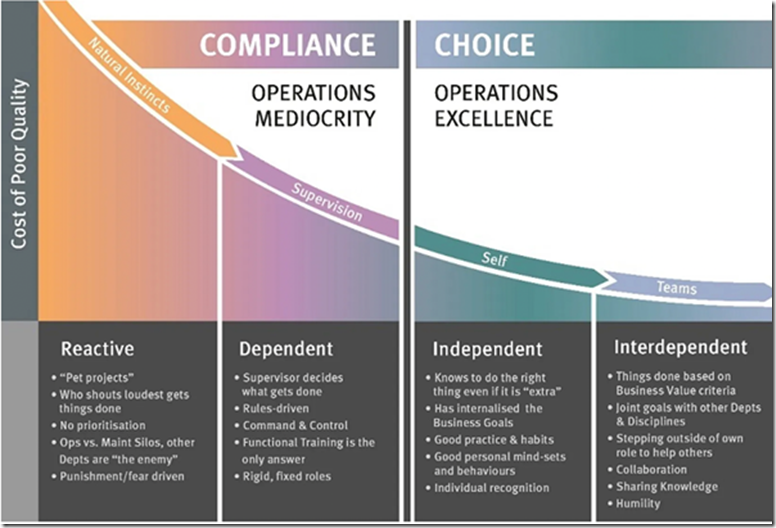It is interesting that the concept of myth stirs up Safety so much, especially when there is no study of myth or symbol in any safety curriculum globally.
If you want to know about myth and symbol and how they operate in the unconscious and collective unconscious Mind, one can start researching here:
- Ricoeur on Myth and Demythologizing
- Fallible Man
- The Symbolism of Evil
- Myth, Symbol and Ritual in the Sacred Society
- The meaning of myths
But unfortunately, Safety is not interested in research, it simply wants to tell all it knows.
In over 1000 blogs written over many years I have never had one enquiry that seeks clarification or understanding. I have never had one response that asks a question that seeks learning. I have never had one email that seeks understanding of my worldview (philosophy) and what drives my writing. Such is the desire of Safety for non-learning.
An understanding of myth and symbol helps determine whether models in Safety are helpful or unhelpful. This includes understanding the by-products of myths and symbols and what they serve.
So much that is presented in models, symbols and attached myths are not historically or factually ‘true’. That is, they are concocted methods that seek to try and explain something.
Such methods are usually accepted by the safety industry as if they are true, when they are not. When research evidence is presented about how humans really make decisions, such models as swiss cheese, bow ties, curves and pyramids have no resemblance to reality. They are ‘myths’ placed over an uncertain world or chaos, randomness and unpredictability to give it order and certainty (https://safetyrisk.net/radical-uncertainty/ ).
The real question that should be asked is: Is the model, symbol and myth helpful? Do they help people tackle risk and live in the real world? Do they represent real being? Or are they a distortion of reality and misleading? Therefore, useless and unethical?
For example: The DuPont Bradley Curve
The creation of the Bradley Curve (see Figure 1. Bradley Curve One) is premised on the idea (myth) that humans seek to harm themselves. The image attached is typical of representation of the Bradley Curve. But the image is absolutely false and also unhelpful.
Figure 1. Bradley Curve One
The purpose of the curve is designed to create dependence on safety systems as if safety systems reduce harm. The curve starts with the false assumption that humans have a ‘natural instinct’ to harm. This is a complete falsehood. The truth is, all life is inbuilt with an instinct to preserve life (homeostasis), this is the foundation of both evolution and the Web of Life (see Damasio’s work).
The myth of the curve is premised on the idea that injury rates are a measure of harm and that the greater the intervention the less harm that occurs. Such a convenient falsehood to assist the promotion of DuPont programs against its history of extreme harm and corruption (https://safetyrisk.net/dark-waters-the-true-story-of-dupont-and-zero/).
If you do an image search on Google you will find there are 18 million or more variations on the model/myth, each proposing an addition to the myth as if it were true. When it isn’t!
However, when a myth is empowered by a symbol, it takes on a new truth, a symbolic truth of its own.
Here is just one of many examples at Figure 2. Bradley Curve Two.
Figure 2. Bradley Curve Two.
The iterations of this myth are endless, all premised on the myth to ‘sell’ the idea that people have a natural instinct to harm and that interventions create prevention of harm, even to zero. Zero is the love child of the Bradley Curve.
None of this is true or real.
None of this is ‘historical’ yet, it creates its own version of history. Yet is creates its own form of symbolic reality.
The question again is: it this helpful? Is it ethical? Is it moral? What does it promote? How does it help people tackle the challenges of risk in living? What does it promote? Who benefits from such promotion, indoctrination and power?
Unfortunately, such critical thinking is beyond the confines of Safety compliance and control, indoctrination and religious observance. Such is the creation of myth by the safety curriculum.
Of course, when one has created a society of compliance and control, the idea of questioning myth must be demonised! Such is the nature of how myths create their own form of ‘sacred cow’. Such is the religiosity of Safety, that ‘saves lives’ (https://safetyrisk.net/safety-people-dont-save-lives/). Such is the ‘Spirit of Zero’ (https://safetyrisk.net/the-spirit-of-zero/) that resurrects people back to life and restores limbs all to the music of apocalyptic mythology.
When we question myths or seek to ‘de-mythologise’ something we deconstruct the meaning and purpose of that myth/symbol and ask how it builds personhood, community, helping and care. Hence: is the model/myth helpful? If not, then what can be reconstructed in its place? This is what the many practical tools, methods and models of SPoR offer. A humanising approach to tackling risk.
Much of what is offered by SPoR is for free download and no cost (https://www.humandymensions.com/shop/; https://vimeo.com/humandymensions ).
Yet, so many models on the safety market are about commercialisation from myth making (eg. https://safetyrisk.net/are-you-a-one-percenter/). Just like the Bradley Curve is used to sell a product, an intervention all wrapped up in the silver bullet myth (https://safetyrisk.net/the-silver-bullet/). There is no silver bullet yet so much can be made in safety by selling the myth of one.
Where does this leave us? Hopefully, better prepared to dispose of unhelpful myths and focus on models and symbols that help humanise risk.





BRENT R CHARLTON says
The more I learn from you, Rob, the more disgusted I am with these constructs that are sold as “fact.” All snake oil being sold as the magic potion.
Rob Long says
Even worse when they are sold as ‘differently’.